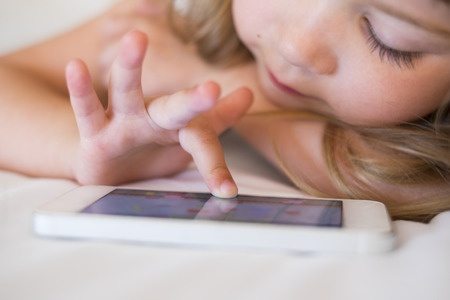When I was a kid, Saturday morning meant watching cartoons on the television. For my kids, it means Kindle time. They play games and flip through e-books while we sleep in. I don’t see too much difference in our childhood experiences. It’s an indulgence on a school-free day, just a different technology.
But my children could be included in the “connected kids” trend that some are predicting for 2015. As Ericsson’s consumer trend report (PDF) for 2015 puts it: “Children will continue to drive the demand for a more tangible Internet, where the physical world is as connected as the screens of their devices.”
The company also found that 46% of surveyed smartphone owners believe children who are exposed to tablets as babies will expect all objects to be connected when they are older.
This stat lead me to wonder who these parents are who give tablets to babies. A study came out last year that found 38% of children under the age of 2 have been exposed to tablets or smartphones. But that leaves the large majority, 62%, who have not.
The American Academy of Pediatrics still recommends that children and teens be limited to two hours of screen time (including TV) and that kids under two should have no screen time at all. While some see the AAP as over-restrictive, most parents I know set some boundaries on device use for young kids.
That said, I still think the general idea behind Ericsson’s prediction is true. Kids love Internet-connected things, and they will continue to push to use them, even if they don’t quite understand what the Internet is yet.
A startup called Dynepic is trying to cash in on this connected kids trend by creating an “Internet of toys.” The company is launching DynePods, a wearable wristband that can connect through the cloud. The idea is that kids will be able to design and program it by using a tablet. They can make it do things like track the family dog’s movement, tell when the mail has arrived and set up an alert for when their friends are near.
The possibilities are intriguing. An Internet of toys gives kids a chance to be in active control of the object and engage with the real world, instead of passively sitting in front of a screen. It also introduces kids to new skills like coding.
This is a level of connected-gadget-play we haven’t seen yet, but it’s still not clear to me if it’s appropriate for elementary school-aged kids. So far the research still comes down pretty hard against device use for young children: that too much can actually inhibit learning and development. Despite what the trend reports say, a lot of parents pay attention to that research. We like to know that something is safe and good for our kids before we shell out for the latest connected device or toy.
And that’s something tech companies and trend watchers shouldn’t forget: Parents are the ones who decide whether to buy these things, or not.

